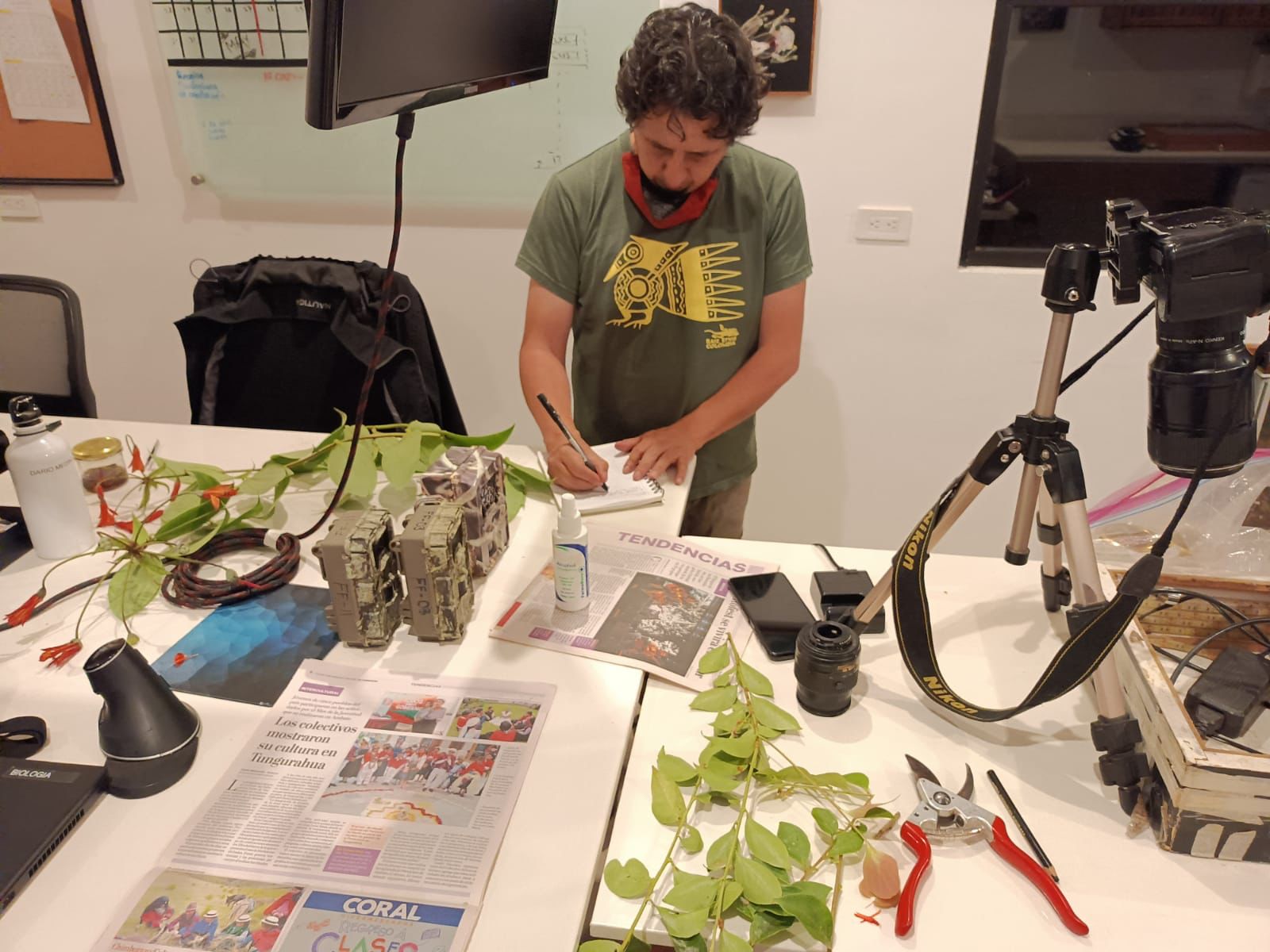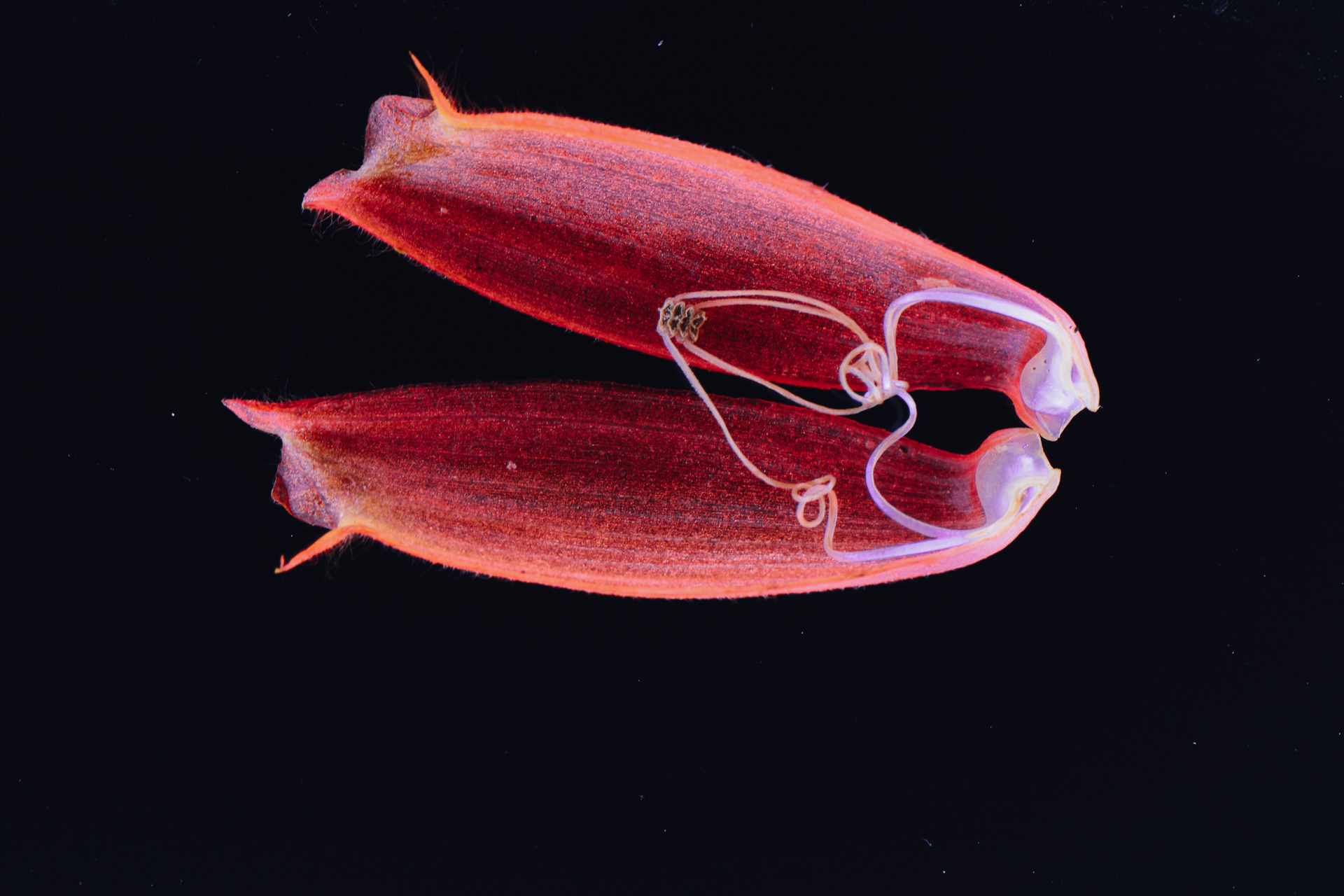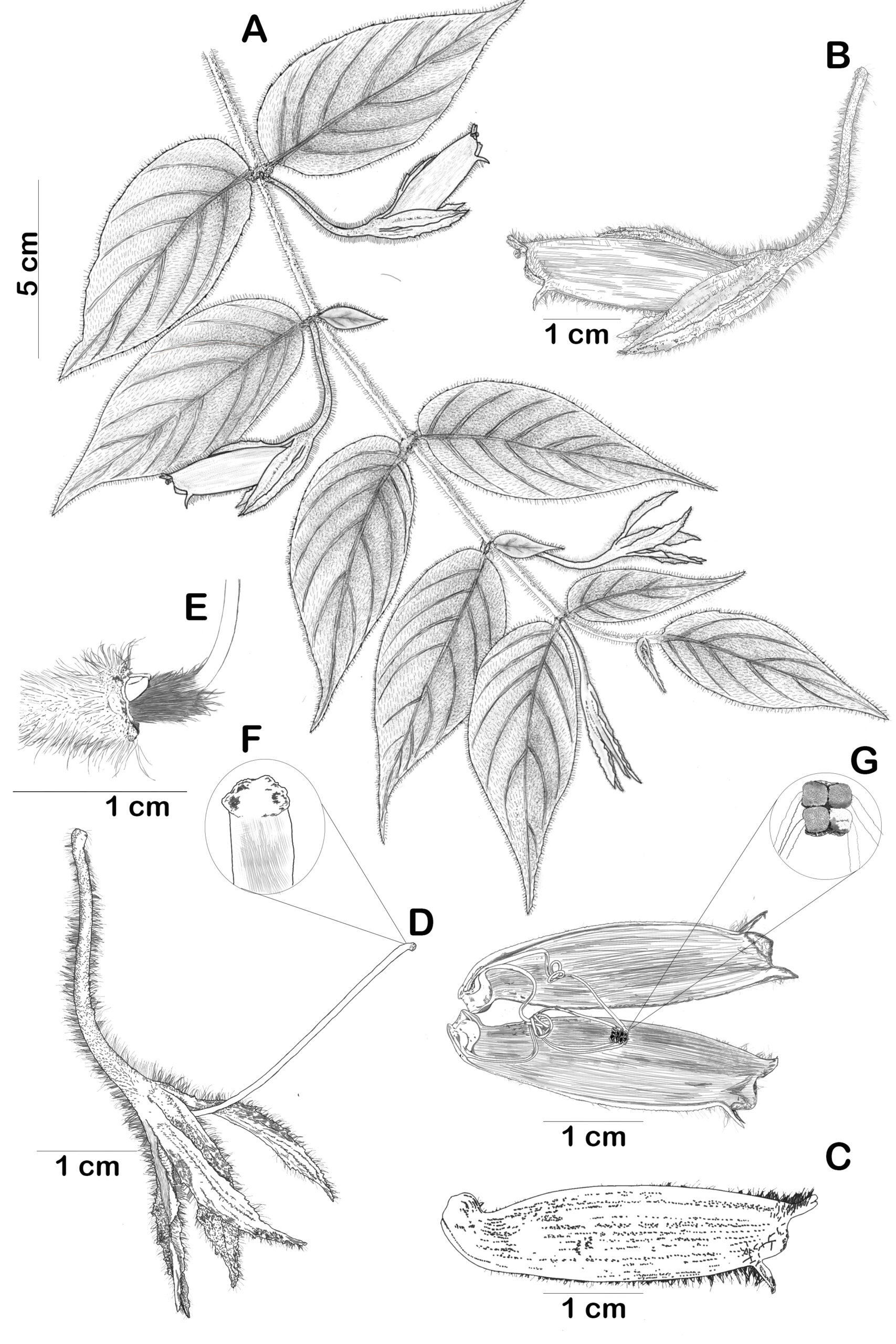Serendipitous Discovery of 10th New Species at Mashpi Lodge:
An Intricate Fluidifolia
Newly discovered species has an unusual arrangement of leaves: the same sprout holds pairs of different and same sizes leaves.
And it’s an epiphyte and grows on other plants.
Scientific research is a fundamental pillar of the Mashpi Lodge project, which has had a permanent resident biologist on staff in the Mashpi Reserve since 2009. The tropical forests of the Andean Chocó region have become an endless cornucopia of plant species for researchers — botany here is truly a magical universe.
Thanks to the efforts of Mashpi Lodge’s Research & Biology team and botanists from Ecuadorian and international academic institutions, the team has described a new plant species for science.
Columnea fluidifolia is part of the Gesneriaceae, which encompasses many species with delightful petal and leaf arrangements and colorful patterns (violets, for example, are part of this family).

Botanist Francisco Tobar in the Mashpi Lodge laboratory.
Its endemic status reiterates the importance of conservation in the Andean Chocó. An endemic species is the evolutionary result of many special adaptations to this bioregion, making its discovery incommensurable for tropical biodiversity.
The discovery of this new species derived from a fascinating field study: The Ecology of Plant-Hummingbird Interactions, conducted in Mashpi between 2017 and 2019 by WSL (Switzerland) and Aves & Conservación (Ecuador).
Flowers and hummingbirds are intimately related in the natural world, which is why studies about interactions, including preferred plants and hummingbird-feeding behavior, are needed. Well, through a happy case of scientific serendipity, this study ended up identifying a whole new plant species.

Individuals of the Columnea sp. plant caught the eye of expert botanist Francisco Tobar, who then initiated a field study. Identifying a new species is not simple; comparing individuals from similar species in Colombia, Panama, and Costa Rica took a couple of years. Because the Chocó bioregion extends across a large swathe of northern South America, comparative studies must not only be detailed but, due to the colorfulness of the Columnea genus, they need to focus on the plant’s flower arrangement. This is why having resident biologists at Mashpi Reserve is so important: they know the various habitats exceptionally well and are constantly monitoring the biodiversity status of the Reserve.

Something special about this species is the unusual arrangement of its leaves: the same sprout holds both pairs of anisophyllous leaves (different sizes) and pairs of isophyllous leaves (same sizes). It’s an epiphyte plant (i.e., it grows on others), pendular, colorful, and eye-catching. The species’ taxonomic name — fluidifolia — describes its varied and unusual flower arrangement perfectly.
Only about 40 individuals of the species have been identified, which automatically puts it on the critically-endangered list, all the more so when considering its relationship with hummingbirds’ survival.
Knowing there are so few of this new species in the Mashpi Lodge Reserve reinforce the hotel’s mission to protect it for the future.
